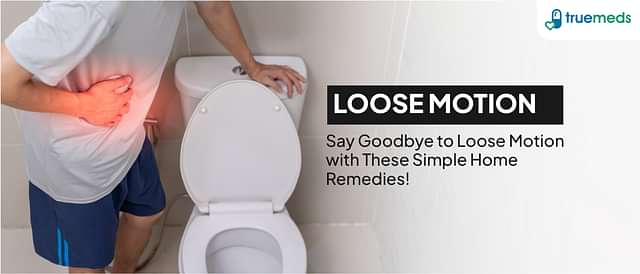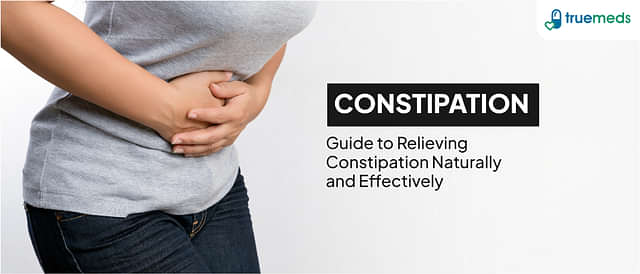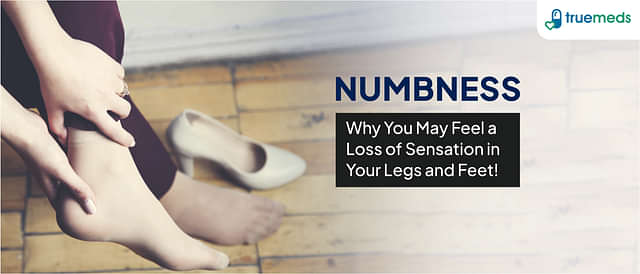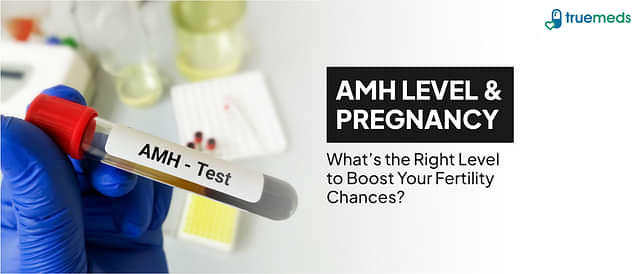Anxiety Attack and Panic Attack: Are They Similar or Different?
Last updated on : 19 Nov, 2025
Read time : 7 min
What are Anxiety and Panic?
At some point, each of us might have felt the distinct, yet often confusing, feelings of anxiety or panic. The words and their meaning sound similar, which is why most people use the terms “panic attack” and “anxiety attack” interchangeably. However, they are clinically different experiences.
According to the American Psychological Association (APA), anxiety is an emotion characterized by feelings of tension, worried thoughts, and physical changes such as increased blood pressure, sweating, trembling, or dizziness [1]. It is often a response to a perceived future threat or stressor. For instance, you may feel anxiety when you are asked to perform on a stage.
On the other hand, the Diagnostic and Statistical Manual of Mental Disorders (DSM-5) defines a panic attack as a sudden and intense surge of fear or discomfort that reaches a peak within minutes and involves at least four specific symptoms [2]. An example of a panic attack is feeling terrified, seemingly “out of the blue,” when you are stuck in an elevator. This article will try to clearly distinguish between these two phenomena.
Key Differences Between Anxiety and Panic Attacks
Anxiety is persistent worry that builds over time, while a panic attack is an acute, intense episode with a sudden onset.
|
Sr. no. |
Element | Panic Attack |
Anxiety |
| 1 | Onset and Timing | Sudden, reaching a peak within approximately 10 minutes. [2] | Gradual, building slowly in response to a stressor or worry, and may last for minutes or hours. |
| 2 | Trigger | Can be expected (triggered by a specific phobia) or unexpected (occurs spontaneously). [3] | Triggered by stress-inducing things, incidents, or situations that cause concern (e.g., a deadline, a relationship issue). |
| 3 | Intensity | Severe and debilitating, often involving a sense of impending doom or fear of dying/losing control. | Mild to moderate, though uncomfortable, generally does not reach the sudden, all-consuming intensity of a panic attack. |
| 4 | Core Symptoms | Causes chest pain, hot flashes, fear of dying/losing control, sweating, and rapid heart rate (cardiac symptoms are prominent). [2] | Causes restlessness, disturbed sleep, fatigue, difficulty concentrating, and irritability (worry and tension are prominent). [2] |
Causes and Triggers of Anxiety and Panic Attacks
While the exact mechanisms are complex, genetic, biological, and environmental factors contribute to both anxiety and panic disorders.
1. Panic Attacks:
The occurrence of panic attacks is categorized as expected (cued) or unexpected (uncued) [3]:
- Expected Panic Episodes: These are triggered by external signals, such as a specific phobia (e.g., a fear of heights or flying), leading to anticipatory panic.
- Unexpected Panic Episodes: These occur for no apparent external reason, making them feel random and highly distressing.
- Biological Factors: Genetics or imbalances in neurotransmitters can increase the risk of developing a panic disorder [4].
- Co-occurring Conditions: A person suffering from an existing anxiety disorder has a greater risk of developing sudden episodes of panic attacks.
2. Anxiety:
Anxiety is usually related to the feeling that something unusual or threatening is about to happen. The DSM-5 includes various classifications of anxiety disorders [2], including:
- Generalized Anxiety Disorder (GAD)
- Panic Disorder
- Specific Phobia
- Social Anxiety Disorder
- Separation Anxiety
- Agoraphobia
Note: Post-Traumatic Stress Disorder (PTSD) and Obsessive-Compulsive Disorder (OCD) are related but classified under different chapters in the DSM-5.
Triggers for Anxiety Attacks can often be tied to everyday activities and chronic stressors:
- Chronic Stressors: Everyday life activities such as professional pressure, financial worries, or relationship issues.
- Phobias and Traumatic Memories: Different types of phobias or a memory of a past traumatic event can serve as direct triggers.
- Underlying Medical Conditions: Certain medical conditions like asthma, diabetes, thyroid disease, or cardiovascular disease can produce or worsen anxiety symptoms [5].
Shared Risk Factors and Vulnerabilities
There is significant overlap in the factors that make an individual vulnerable to developing either an anxiety or a panic disorder.
- Traumatic Life Events: Experiencing a highly impactful event, such as the death of a close person or severe abuse, can be a major risk factor [6].
- Co-occurring Mental Health Issues: Dealing with depression or other mental illnesses significantly increases the risk.
- Early Onset of Symptoms: For many, half of all lifetime cases of mental disorders, including anxiety, start by the age of 14 years [6].
- Family History: Having a first-degree family member (parent, sibling) dealing with anxiety or panic disorders suggests a genetic predisposition.
- Substance Use/Withdrawal: Withdrawal symptoms from drug and alcohol abuse frequently include heightened anxiety and panic [5].
- Chronic Health Conditions: Dealing with a chronic or terminal illness like cardiovascular disease or cancer creates persistent psychological stress, which is a key risk factor for anxiety.
Conclusion
While panic attacks and anxiety attacks are not the same—one is an intense, acute episode, the other is a gradual, persistent state of worry—they share similar causes and risk factors.
You should communicate with your doctor or a licensed mental health professional if anxiety or panic symptoms interfere with your day-to-day activities, cause significant distress, or lead to avoidance behaviors. Early intervention is crucial and often makes a significant difference in a person’s outcome. Your healthcare provider will create a tailored treatment plan, which may include cognitive behavioral therapy (CBT), medication, or a combination of both [4].
Frequently Asked Questions
How is anxiety different from a panic attack?
Anxiety builds gradually in response to ongoing stress and worry and may last minutes to hours. A panic attack is a sudden surge of intense fear or discomfort that peaks within approximately 10 minutes and is often overwhelming.
What physical signs suggest a panic attack?
Abrupt onset of physical symptoms such as rapid heartbeat, chest pain or tightness, shortness of breath, sweating, or trembling can occur. Many people also describe a sense of impending doom or fear of losing control.
What typically triggers an anxiety episode?
Chronic stressors such as work pressure, health worries, financial strain, phobias, or past trauma may set it off. Lifestyle factors like excessive caffeine intake, chronic sleep loss, or the use of certain medicines can further heighten anxious feelings.
When should I seek professional help?
See your doctor or a mental health professional if symptoms persist, disrupt daily life, cause avoidance of normal activities, or lead to depression. Early assessment enables a formal diagnosis, tailored therapy, self-management advice, and, if necessary, medication.
Disclaimer
This content, including any advice, suggestions, or information about medications, provides general information for educational and awareness purposes only. It is not a substitute for professional medical advice, diagnosis, or treatment from a qualified healthcare provider. Always consult a specialist or your doctor for personalized medical guidance regarding your specific condition.
References
[1] American Psychological Association. (n.d.). Anxiety. Retrieved November 2, 2025, from https://www.apa.org/topics/anxiety
[2] American Psychiatric Association. (2013). Diagnostic and statistical manual of mental disorders (5th ed.). https://doi.org/10.1176/appi.books.9780890425596
[3] Cackovic, C., Nazir, S., & Marwaha, R. (2025). Panic disorder. In StatPearls. StatPearls Publishing. Retrieved November 2, 2025, from https://www.ncbi.nlm.nih.gov/books/NBK430973/
[4] National Institute of Mental Health. (n.d.). Anxiety disorders. U.S. Department of Health and Human Services. Retrieved November 2, 2025, from https://www.nimh.nih.gov/health/topics/anxiety-disorders#part_2225
[5] Substance Abuse and Mental Health Services Administration. (2016). Chapter 3: Anxiety disorders. In TIP 58: Addressing suicide risk in substance abuse treatment. Substance Abuse and Mental Health Services Administration (US). Retrieved from https://www.ncbi.nlm.nih.gov/books/NBK384950/
[6] Kessler, R. C., Berglund, P., Demler, O., Jin, R., Merikangas, K. R., & Walters, E. E. (2005). Lifetime prevalence and age-of-onset distributions of DSM-IV disorders in the National Comorbidity Survey Replication. Archives of General Psychiatry, 621(6), 593–602. https://doi.org/10.1001/archpsyc.62.6.593
Disclaimer
Our healthcare experts have carefully reviewed and compiled the information presented here to ensure accuracy and trustworthiness. It is important to note that this information serves as a general overview of the topic and is for informational purposes only. It is not intended to diagnose, prevent, or cure any health problem. This page does not establish a doctor-patient relationship, nor does it replace the advice or consultation of a registered medical practitioner. We recommend seeking guidance from your registered medical practitioner for any questions or concerns regarding your medical condition.
Popular Articles
Recommended Articles
Recent Articles
Company
About UsHealth ArticleHealth StoriesHealth LibraryDiseases & Health ConditionsAyurvedaAll MedicinesAll BrandsNeed HelpFAQSecuritySubscribe
Registered Office Address
Grievance Officer
Download Truemeds
Contact Us
Our customer representative team is available 7 days a week from 9 am - 9 pm.
v4.9.0
2025 - Truemeds | All rights reserved. Our content is for informational purposes only. See additional information.
Our Payment Partners














































